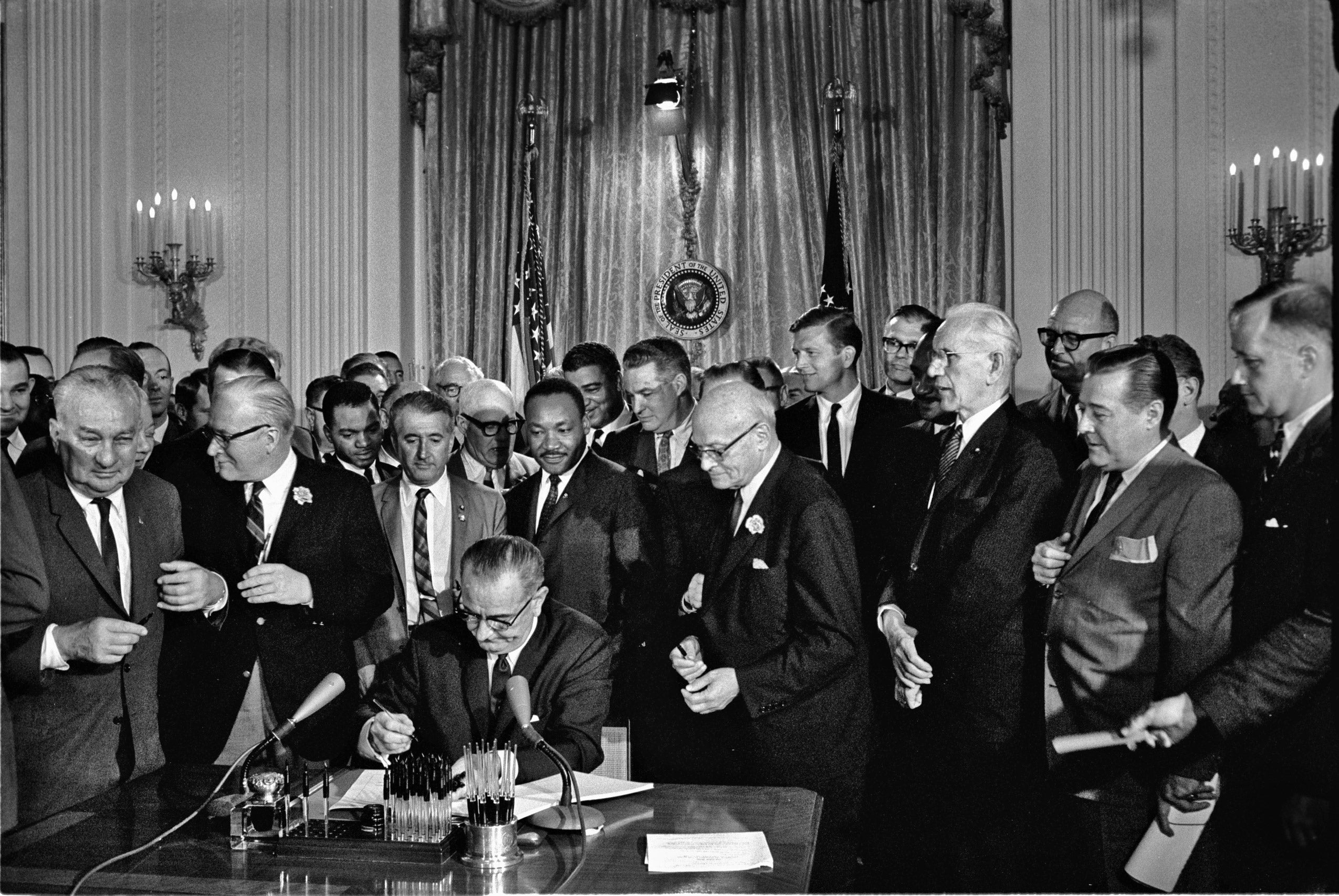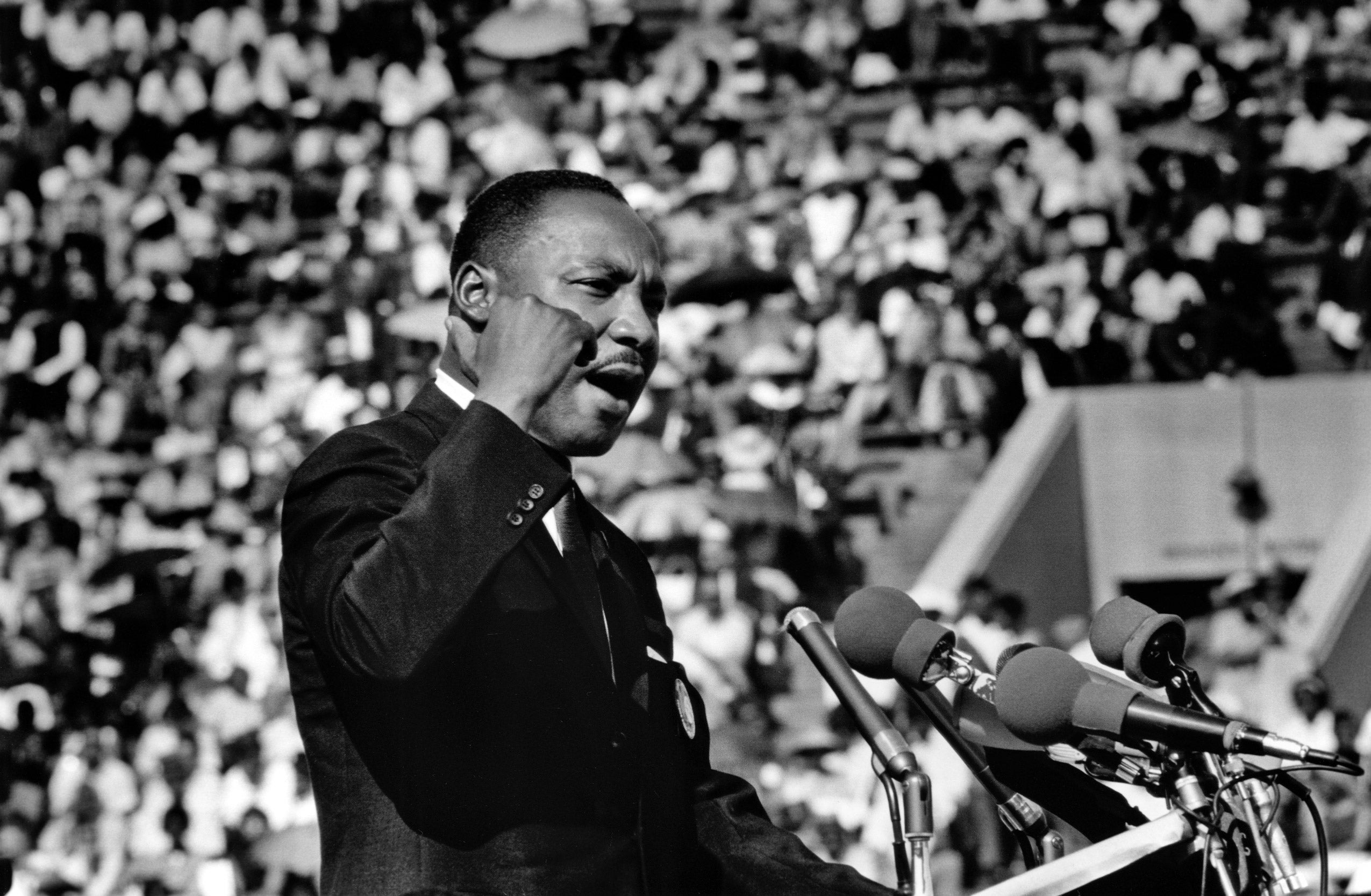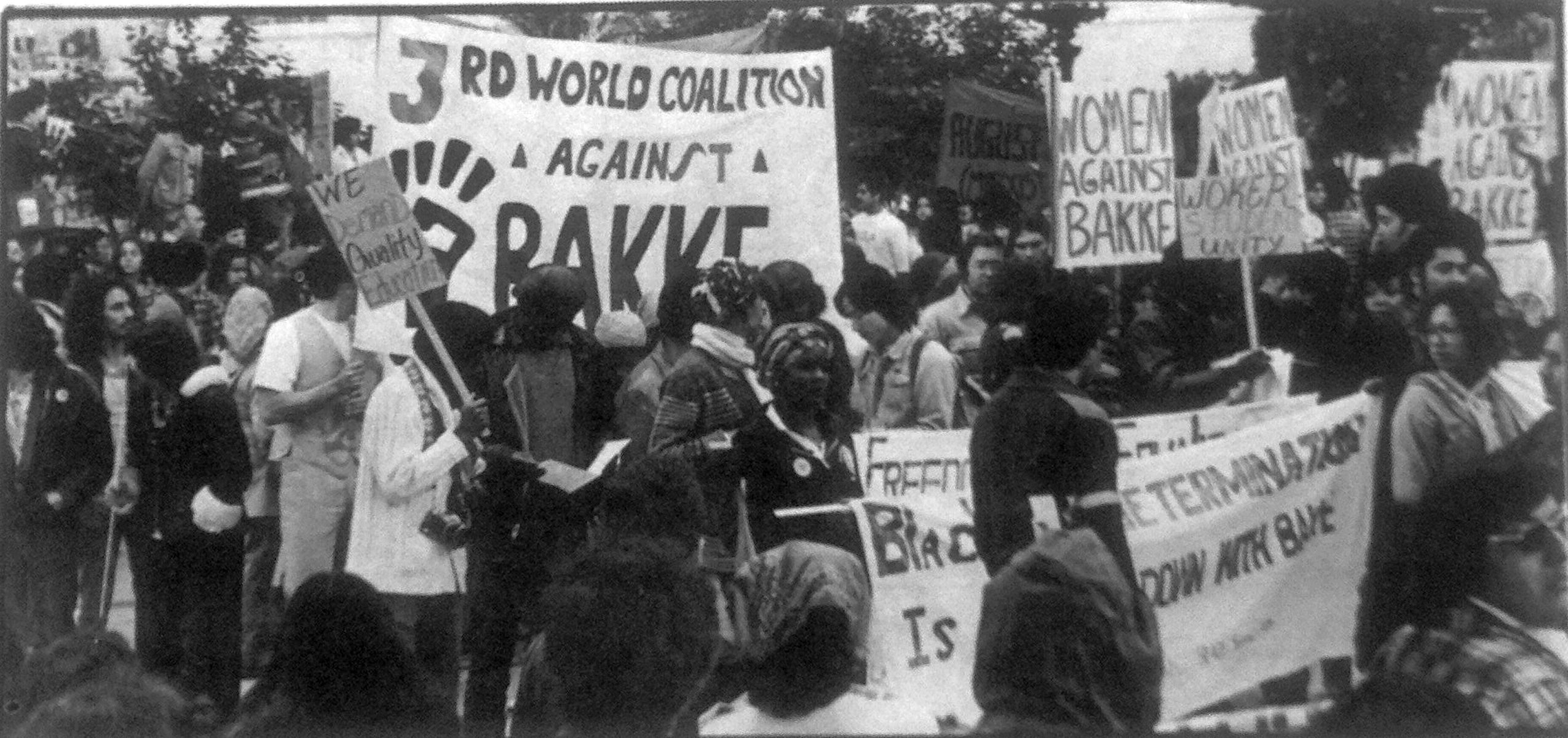
President Lyndon B. Johnson signed the Civil Rights Act into law on July 2, 1964. While tributes mark the act’s 50th anniversary, so does talk of a divided America and the new face of inequality.
Harvard Law Professor Tomiko Brown-Nagin, the author of “Courage to Dissent: Atlanta and the Long History of the Civil Rights Movement” (Oxford, 2011), sees education as the civil rights frontier. A constitutional scholar, historian, and expert in education law and policy, she participated in the University of Chicago Legal Forum’s fall 2013 symposium, “The Civil Rights Act at 50,” presenting a paper on “Rethinking Proxies for Economic Disadvantage in Higher Education,” to be published in the fall. Brown-Nagin spoke with the Bulletin in April.
From all the discussion about the Civil Rights Act’s first 50 years, what do you think is crucial to carry forward?
I’m not fond in general of commemorating legislation or judicial decisions. … I think such occasions tend to celebrate more than reflect and critique—and I like to do the latter! However, there is one aspect of the CRA that I’m pleased to celebrate. We should never forget that the Civil Rights Act and Brown v. Board of Education launched a “movement of movements.” The civil rights movement shouldn’t be understood in isolation, in terms of African-Americans protesting for rights and litigating for rights. The movement not only inspired the black struggle, but also ignited other struggles for inclusion—for women, gays, the disabled, and other racial and ethnic groups.
Are the CRA’s gains in fighting inequality in schools being eroded, as some say?
I think it’s important to offer a balanced picture. For a time, the Civil Rights Act was quite meaningful. Consider the Southern states, where K-12 schools and all the flagship universities were desegregated under authority of the act in the 1970s. There was a robust period of activism and inclusion. Before it ended in the 1980s, a generation of black students, Hispanics and others, including many whose parents did not attend college, was able to gain a foothold in American society, to embark on the “American dream.”
The judiciary gradually stopped demanding inclusion on the view that once formal equality was established, no more needed to be done. Now there’s resistance to remedying race-based disparities in health and schooling, no matter how obvious. Race-conscious remedies in higher education and employment have been highly controversial for several decades.
Toward the end of his life, Dr. Martin Luther King Jr. turned his focus to poverty. How does poverty influence equality in education?

Students disadvantaged by race and class bear the brunt of the unfinished business of civil rights. The Civil Rights Act aided middle-class families who were best positioned under segregation to move forward. Impoverished families furthest from the American mainstream were in the worst position to benefit from the act. Dr. King was working on these issues in the 1960s before he died.
Why haven’t judges and legislators done more?
There are a variety of reasons. One observation I make in my current work is that the legal debate over affirmative action tends to crowd out conversation about the overall direction of higher education and policy and how educational disadvantage fits within it. Courts and legislators moved from talking about “discrimination” and “disadvantage” in higher education during the 1960s to touting “diversity.” Now, diversity is a capacious concept; in theory, it’s wonderful. And it has helped integrate elite colleges and workplaces. But I fear policymakers have grabbed hold of this notion of inclusion on terms that often leave behind the neediest students.

One sees this in the University of California v. Bakke [1978] opinion, in Justice Powell’s reasoning about how universities can take account of race [in selecting their incoming classes]. The prevailing understanding is universities can seek out candidates to establish a student body where there are many types of students: football players, math stars, musicians, culturally advantaged and disadvantaged students—in practice, this means universities have a lot of discretion as to whom they can select. In reality, it can be difficult for promising candidates from impoverished backgrounds to compete in today’s admissions environment, even when selective universities claim to seek a diverse student body. The thumb on the scale tends to help students of color from middle-class, well-educated backgrounds. Those students should be included.
My research agenda focuses on the others—talented students from truly disadvantaged backgrounds. Those students exist outside of the social and family networks where knowledge is passed down about how to play the admissions game. That game is played not just by earning good grades and scores but also by building resumes full of accomplishments that make one unique and noticeable. If you’re a smart kid from a poor background, you need to know how to communicate, “Please look at me.” You need to know what courses to take in middle school, how to form relationships with mentors. The feel-good language of diversity does not speak to any of that.
What remedies do you suggest?
The Department of Education should require universities to report on the percentage of first-generation students admitted. I am particularly interested in initiatives to reach bright, first-generation students eligible for Pell Grants [need-based federal funding]. The DOE’s website offers a lot of data, but this data reflects old categories. The face of inequality has changed, and the DOE’s categories have not kept up.
Universities also should select for first-generation Pell Grant applicants in the admissions process and make a special effort to support them once they matriculate. Many universities claim to want these students, but the admissions process is so competitive that they can get lost in the shuffle.
It is also important for universities to collaborate with local schools and create a pipeline to nurture students who would be good candidates. Universities don’t necessarily know where these good candidates are; partnering with community institutions would make it a lot easier to identify them. This summer, I am setting these ideas down in a new book project.
What sparked your work on equality in education?
I started off interested in Brown v. Board of Education then moved to voting rights and public accommodations issues. But I realized one couldn’t understand Brown without understanding the larger context of politics, activism, court rulings. However, K-12 is foundational. Education is the civil rights frontier: You cannot be interested in civil rights and not be interested in equity in education.
